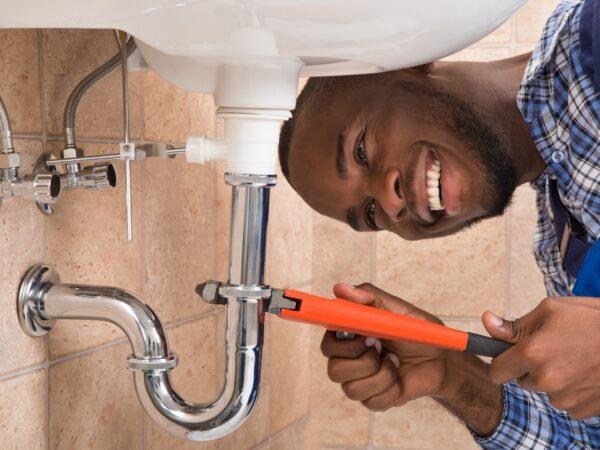10 Most Common Plumbing Problems Solve The Expert Plumbers

The following article discusses the different kinds of plumbing problems and gives recommendations for easing severe plumbing conditions.
Plumbing concerns are always close to the surface. Some might be too complex for an amateur to fix, while others may require only basic equipment and a little know-how to overcome. Below are 10 common plumbing problems, their causes, and easy solutions to overcome them.
1. Dripping Faucets
Problem:
Bubbling taps are very annoying, but they also waste a lot of water, which is very important. This is mainly because one dripping faucet can waste a lot of water in a year, hundreds of gallons, to be precise, translating to inflated water bills.
Cause:
This type of problem often occurs when the washers are worn out, cartridges are bent, or various parts of the faucet assembly are loose. These parts tend to wear out after prolonged use.
Fix:
Step 1: Turn off the water supply to the faucet to prevent spillage.
Step 2: Dismantle the faucet assembly with a wrench precisely and carefully.
Step 3: Check the washer or O ring or cartridge for breakage.
Step 4: Buy a new one at a hardware store, then fit in any worn-out or damaged parts.
Step 5: Reassemble the faucet, turn on the water, and check if the dripping has ceased.
Common Advice: It is advisable to always wrap the threads with the plumber’s tape for maximum sealing.
2. Blocked Drainage
Problem:
Blockage of drain pipes can impede the flow of water in a basin, a sink, a bathtub, or a shower pan and, in worst cases, cause water logging and a bad smell.
Fix:
Step 1: Start with a plunger. Place it over the drain and push it down repeatedly to loosen minor blockages.
Step 2: For stubborn clogs, pour a mixture of baking soda and vinegar into the drain, followed by hot water after a few minutes.
Step 3: Use a drain snake or auger to reach deeper blockages.
Step 4: If the clog persists, it may require professional hydro-jetting.
Pro Tip: Prevent future clogs by using drain strainers to catch hair and debris.
3. Running Toilets
Fix:
Step 1: Remove the tank lid and inspect the internal components.
Step 2: Replace the flapper if it’s damaged or not sealing the tank properly.
Step 3: Adjust the float to ensure the water level stops at the appropriate height.
Step 4: If the fill tube is worn out, replace it with a new one.
Pro Tip: Keep a toilet repair kit handy for quick fixes.
4. Low Water Pressure
Fix:
Step 1: Check the aerators on faucets and showerheads. Remove and soak them in vinegar overnight to dissolve mineral deposits.
Step 2: Ensure that your main water valve is fully open.
Step 3: Inspect for leaks in pipes that may be reducing water flow.
Step 4: If the problem persists, contact your local water utility provider to check for external issues.
5. Leaky Pipes
Fix:
Step 1: Turn off the water supply to prevent further leakage.
Step 2: Add epoxy putty or a pipe clamp to the leaking area temporarily.
Step 3: For a permanent solution, replace the damaged section of the pipe or tighten loose fittings.
Step 4: Insulate exposed pipes to prevent freezing and further damage.
Pro Tip: Regular inspections can help detect leaks early before they escalate.
6. Water Heater Issues
Fix:
Step 1: Turn off the power supply and drain the tank to remove sediment.
Step 2: Inspect and reset the thermostat to the desired temperature (usually 120°F).
Step 3: Replace any defective heating elements if needed.
Step 4: If the problem persists, consider replacing the water heater.
Pro Tip: Flush the water heater tank at least once a year to prevent sediment buildup.
7. Garbage Disposal Jams
Fix:
Step 1: Turn off the power to the garbage disposal unit.
Step 2: Use an Allen wrench to rotate the flywheel manually and dislodge the obstruction.
Step 3: Plumbing Services Chantilly helps to remove debris using tongs or pliers, never your hands.
Step 4: Restore power and test the disposal.
Pro Tip: Always run cold water when disposing to prevent clogs.
8. Sewer Line Backups
Fix:
Step 1: Avoid using any plumbing fixtures during a backup.
Step 2: Use a plumbing auger to remove minor obstructions.
Step 3: Hire professionals for video inspections or hydro-jetting for extensive blockages.
Step 4: Replace the affected sewer line in cases of significant damage.
9. Leaking Hose Bibb
Fix:
Step 1: Turn off the water supply to the hose bibb.
Step 2: Replace the washer or repair any damaged components.
Step 3: Insulate the faucet during cold weather to prevent future leaks.
Pro Tip: Consider installing a frost-proof hose bibb for better durability.
10. Sump Pump Failure

Comments